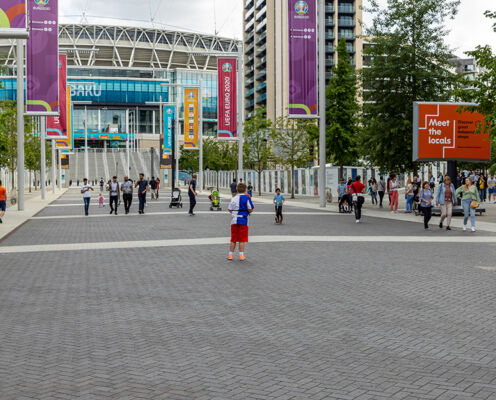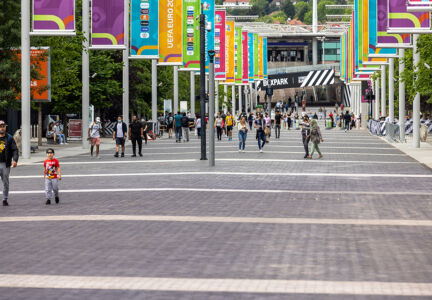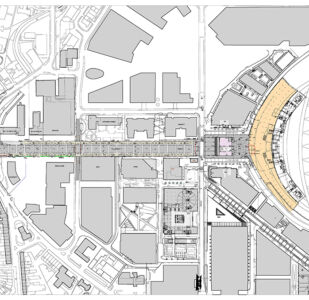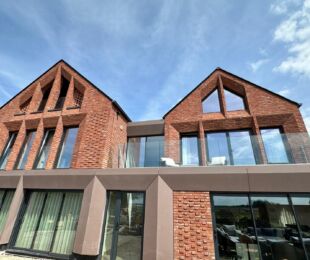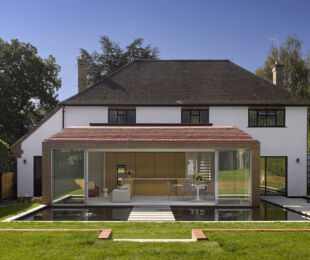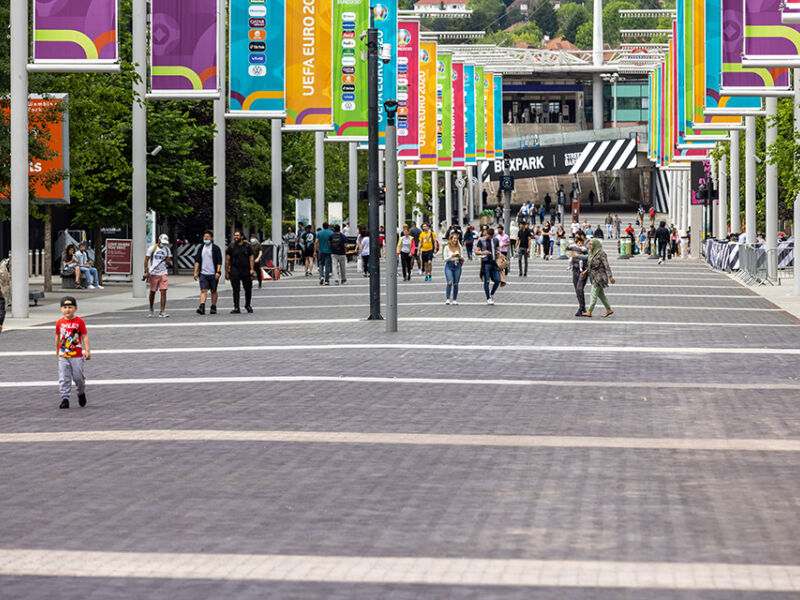
Wembley Park by Quintain is one of the largest urban regeneration projects in Europe. Built to cater for residents, workers and visitors, the 85-acre site is being transformed into one of London’s most exciting new mixed-use developments, incorporating business and leisure facilities, new homes and public spaces creating a vibrant neighbourhood in which to work and live.
At its heart is Olympic Way or ‘Wembley Way’ which established itself as the iconic approach to the World-famous National Stadium during the 1948 Olympic Games. Television images of fans using its tree-lined boulevard as a processional route to the stadium has made Olympic Way well-known to football fans worldwide.
In 2017, proposals were announced for a joint project by Brent Council and developer, Quintain to enhance the quality of this seventy-year-old route. A Council report said:
‘Olympic Way is a piece of public realm showing its age. It does not present the type of quality considered consistent with the environment necessary for a world-renowned iconic venue and the wider Wembley Park development.’
Quintain wanted the new Olympic Way to create a ‘World Class’ sense of arrival for visitors as they approach the stadium as well as a welcoming environment for people who use the neighbourhood 365 days a year. Virtual reality design was used to map out the entire area, simulating pedestrian flow for stadium event days and every day, and studying the different day and night-time conditions.
The new scheme, carried out in three phases, was designed by Dixon Jones Architects. It draws on the heritage of the site, widening the existing route by 50% and using over 230,000 Ketley Staffordshire blue clay chamfered pavers, in a herringbone pattern interspersed with bands of granite. The paving needed to withstand high footfall and heavy delivery vehicles, raising challenges for the longevity of the paving. The paved area was treated with Resiblock 22, which would keep the sand solid in the paving joints, whilst also giving the pavers extra protection against staining from food and grease stains.
The clay pavers, made from Etruria marl clay and fired at over 1130 degrees, are extremely resistant to staining and their permanent Staffordshire blue colour will not fade over time. While the work was carried out, the National Stadium remained in use, with contractors Volker Fitzpatrick working around the schedule of matches and using strong hoardings to keep pedestrian channels away from the area under development.
The final part of the scheme has seen the old Pedway being replaced by the new Olympic Steps, freeing up space for a landscaped piazza for public use. The new steps extend Wembley Way to meet Engineers Way, uniting the east and west of Wembley Park with an inviting, distinctive and accessible public space. This new public realm, now lined with the same Staffordshire blue Ketley chamfered pavers, has been transformed into an open-air environment for Wembley Park’s visitors and residents to meet, take in the views of Olympic Way and enjoy the curated, vibrant, reimagined neighbourhood.
